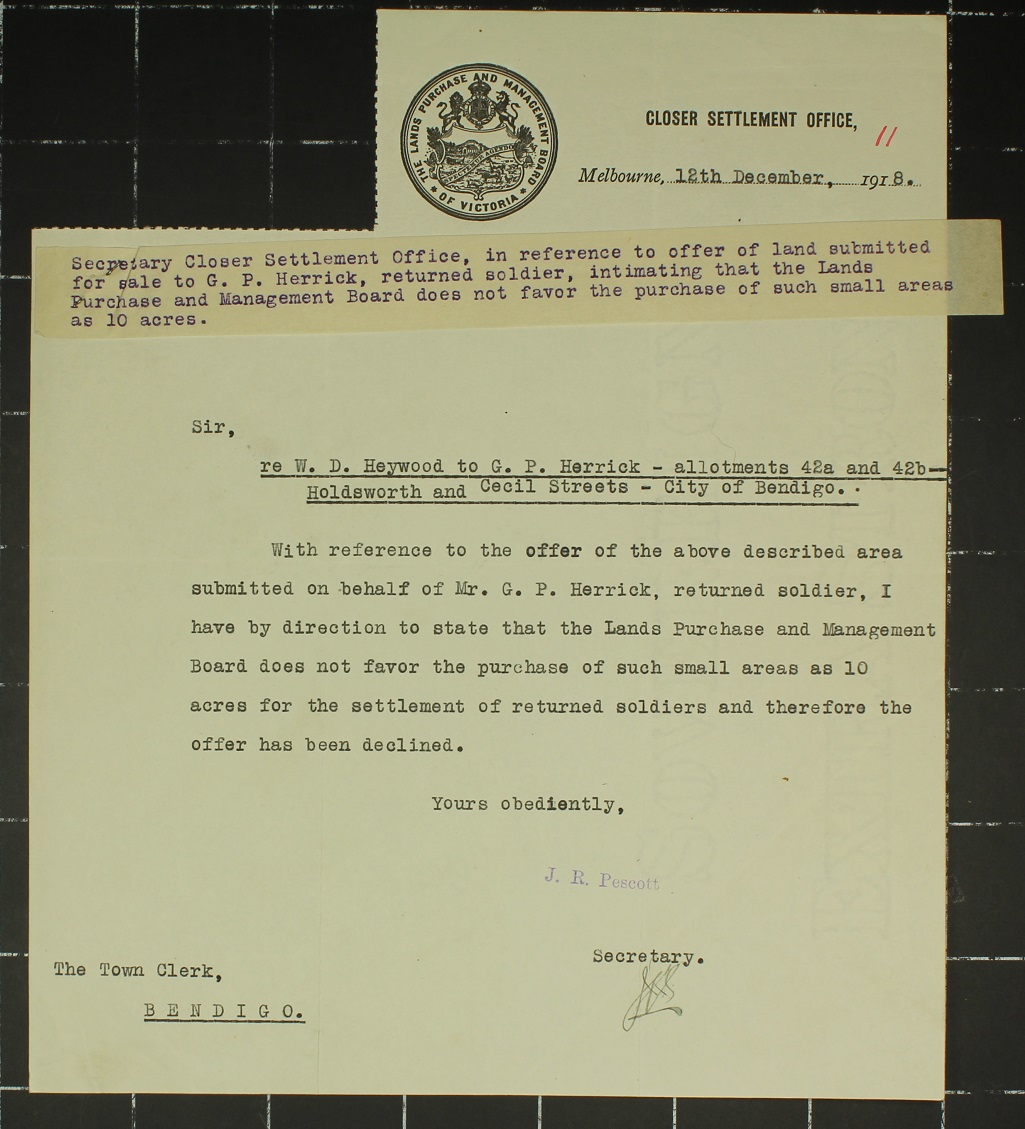
Author: Public Record Office Victoria
Following the end of the First World War, more than 250,000 soldiers returned to Australia; almost 78,000 to the state of Victoria alone.
The Victorian Soldier Settlement Scheme was developed to provide these returned soldiers with a livelihood and as a reward for the service they had given their country on the battlefield.
Between 1918 and 1934, the Scheme helped settle around 11,000 of these returned soldiers on farming land across Victoria. Most settled in the Mallee, South Gippsland, the Western District and the irrigation areas of the North West, Central Gippsland near Maffra and Sale and in the Goulburn Valley.
View the soldier settler archives
The original records of the soldier settlers are now on display at Old Treasury Building as part of the Soldier On: WW1 Soldier Settler Stories exhibition. You can also access these records online via our Battle to Farm website - simply search your ancestor's name and all of their files will appear.
“Over the years there has been great debate as to the success or failure of the settlement scheme as ex-soldiers were entering farming life in an increasingly difficult economic climate as the world descended into the depression. Through these resources, we can see not only the land allocated to each settler, but the hardships they faced,” said Public Record Office Victoria Director and Keeper of Public Records, Justine Heazlewood.
Over 50 per cent of the soldiers allocated blocks left the scheme. Many were unable to cover their debts when food prices plummeted during the depression, while others accused the government of leasing blocks that were too small.
Shirley Boyle’s family, daughter of Beaufort soldier settler James Henderson, was an exception. Their records can be found on the Battle to Farm website, and she says life was hard for everybody during the depression, but her family never felt deprived.
“When you lived on a farm you had your butter, your milk and your vegetables – you didn’t realise there were shortages,” Shirley said.
The returned soldiers lived close to one another and developed new regional communities.
“We lived like a village, only we lived further apart then you do in a village, and we would meet at weekends on ponies or on bikes…and so we were sort of known as the soldier settlers and we had a lot of fun, we grew up well.”
Download the WWI Resource Kit
The Bendigo Regional Archives Centre has developed a WW1 Resource Kits for researchers interested in the responses to the war from the Bendigo, Eaglehawk, Huntly, Marong, Strathfieldsaye, McIvor and Raywood Councils.
Derived from council minutes, the kits include:
- School Children's contributions to Patriotic and War Savings funds' collections
- The formation and activities of local voluntary fundraising groups
- Enlistment figures
- The plans to construct the Soldiers' War Memorial in Pall Mall.
Correspondence related to the soldier settler scheme can also be found in the records, such as this one:

Document contained within the WWI kit.
Material in the Public Record Office Victoria archival collection contains words and descriptions that reflect attitudes and government policies at different times which may be insensitive and upsetting
Aboriginal and Torres Strait Islander Peoples should be aware the collection and website may contain images, voices and names of deceased persons.
PROV provides advice to researchers wishing to access, publish or re-use records about Aboriginal Peoples
